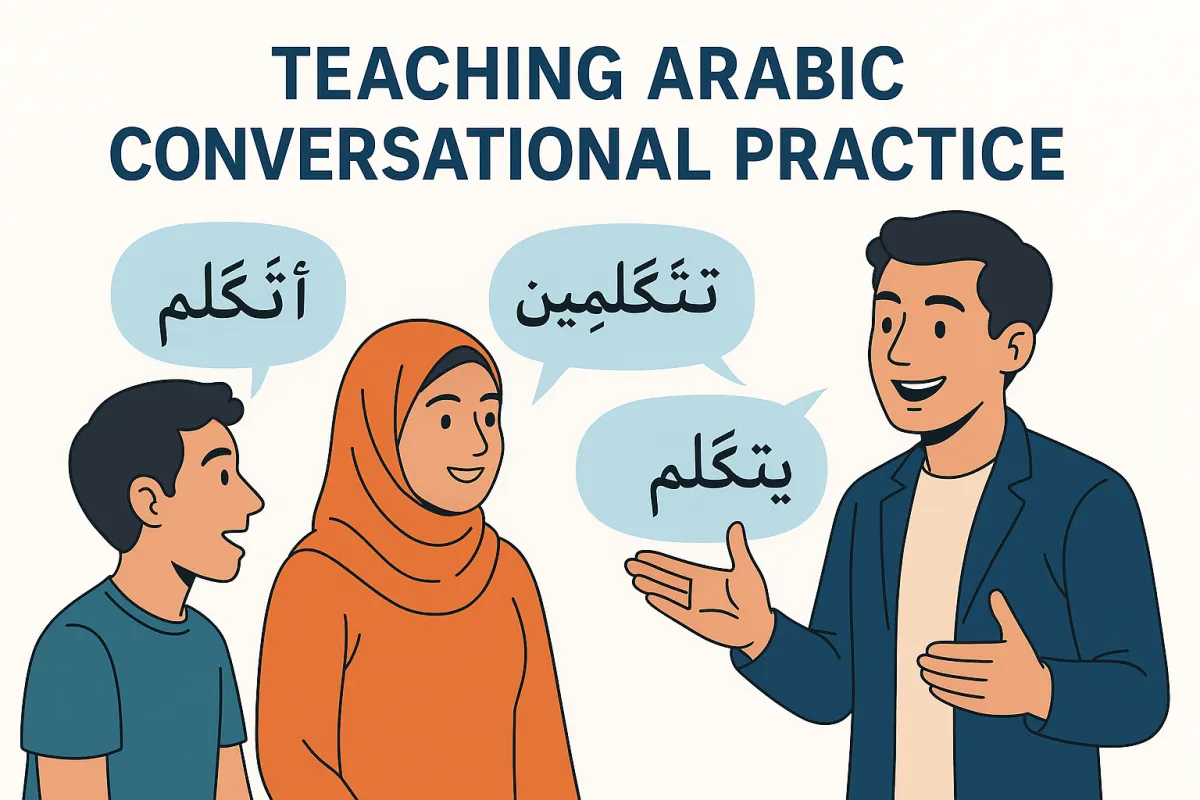
Train Your Reflexes: How to Conjugate Arabic Verbs in Real Time
".بِكَثرةِ التكرار تُفتَح الأَسْرار"
"Through frequent repetition, the secrets are revealed."
-- Imam Al-Shāfiʿī (الشافعي)
Conjugate in Real Time
Training Your Brain to Flex Arabic Verbs on the Spot
One of the biggest challenges for English speakers learning Arabic isn’t memorizing verb tables—it’s using those verbs in real time. You might know the conjugations on paper, but when it comes time to speak, your brain freezes. Why? Because you’ve practiced recognition, not recall under pressure.
If you want to speak fluidly in Arabic, you need to train for what actually happens in conversation: someone says something, and your brain has a fraction of a second to respond with the correct tense, root, and point of view. That’s where focused conjugation drills come in.
Why Real-Time Conjugation Is So Hard
In English, verb conjugation is simple. For most verbs, the only shift is in the third person singular:
I eat
You eat
He eats
But in Arabic, each point of view has its own form—sometimes with internal vowel shifts, prefixes, suffixes, or both. Add gender and plural/singular into the mix, and suddenly you’ve got 13+ variations per verb. That’s not a small ask for someone trying to hold a conversation.
So how do we simplify this without dumbing it down?
Start with One Point of View at a Time
Instead of trying to memorize full conjugation charts all at once, start with just one point of view—say, the first person.
You’ll find that within each POV category, the conjugations share a rhythm:
First person singular: أنا بكتب (I write)
First person plural: نحنا منكتب (We write)
You’re working within the same mental rhythm: you’re speaking from the self. Once learners get that “I/we” structure ingrained, then they can move on to you, then he/she, and finally they.
Look for Patterns Before Differences
Before drilling the differences, help learners see the similarities. For example, most present tense verbs in Levantine Arabic follow this general prefix pattern:
بـ for “I” and “you (masc)”
بتـ for “you (fem)” and “she”
بيـ for “he”
منـ for “we”
بتـوا or بيـوا for “you all” and “they”
It’s not just random memorization—it’s pattern recognition. You’re building a mental scaffold to hang future conjugations on.
Drill with Targeted Stimulus Switching
Once someone is comfortable conjugating within one POV, I use drills that switch the stimulus—that is, the subject or person we’re talking about.
Let’s say we’re working on the verb كتب (to write) in the present tense. Start like this:
I write → أنا بكتب
We write → نحنا منكتب
I write → أنا بكتب
We write → نحنا منكتب
Switch back and forth. Fast. No charts. No notes. Just rhythm and repetition.
Now switch POV:
He writes → هو بيكتب
She writes → هي بتكتب
He writes → هو بيكتب
Again, back and forth. Then gradually expand to:
You (masc) write
You (fem) write
You all write
The trick here is that for any given POV set, there are at most three variations:
Singular
Dual (if used) or plural
Gendered if applicable
This makes conjugation feel much more manageable—and it mirrors what learners will hear in actual conversation.
Build Speed Before Complexity
Once the structure is familiar, you want speed. This isn’t about translation—it’s about reflexes.
That’s why I avoid having students do drills that mix tense or aspect right away. Instead, we stick to one tense, one verb root, and one point of view category at a time.
We only mix things up once the learner can:
Hear a prompt
Identify the subject
Conjugate correctly
Say it without thinking
That’s the goal: get it out of your head and onto your tongue.
Sample Drill: First Person, Verb = to study (درس)
I study → أنا بدرس
We study → نحنا مندرس
I study → أنا بدرس
We study → نحنا مندرس
Now same drill, but in past tense:
I studied → أنا درست
We studied → نحنا درسنا
Add rhythm. Add speed. Add variation in subject.
Bonus: Use Everyday Verbs Only
There’s no point in drilling verbs you’ll never use. Stick to high-frequency, real-life verbs:
to go (راح)
to eat (أكل)
to drink (شرب)
to write (كتب)
to study (درس)
to work (اشتغل)
These are the verbs learners are most likely to use and hear in daily speech. And once they’ve mastered a few, they’ll start spotting similar conjugation patterns across new roots.
Final Thoughts: Train for the Game, Not the Drill
Memorizing charts is like learning to punch in the air. It might give you technique, but it won’t prepare you for a real conversation.
Real-time conjugation is a reaction skill—something you train the same way athletes or musicians train:
Break it into pieces
Repeat with variation
Speed it up
Make it automatic
Arabic verbs aren’t impossible. You just need to stop approaching them like puzzle pieces and start treating them like reflexes.
Want a guided video drill set for real-time verb training in Levantine Arabic? Subscribe to The Arabic Soundscape and stay tuned for our upcoming drill packs at Ordinardayarabic.com.
